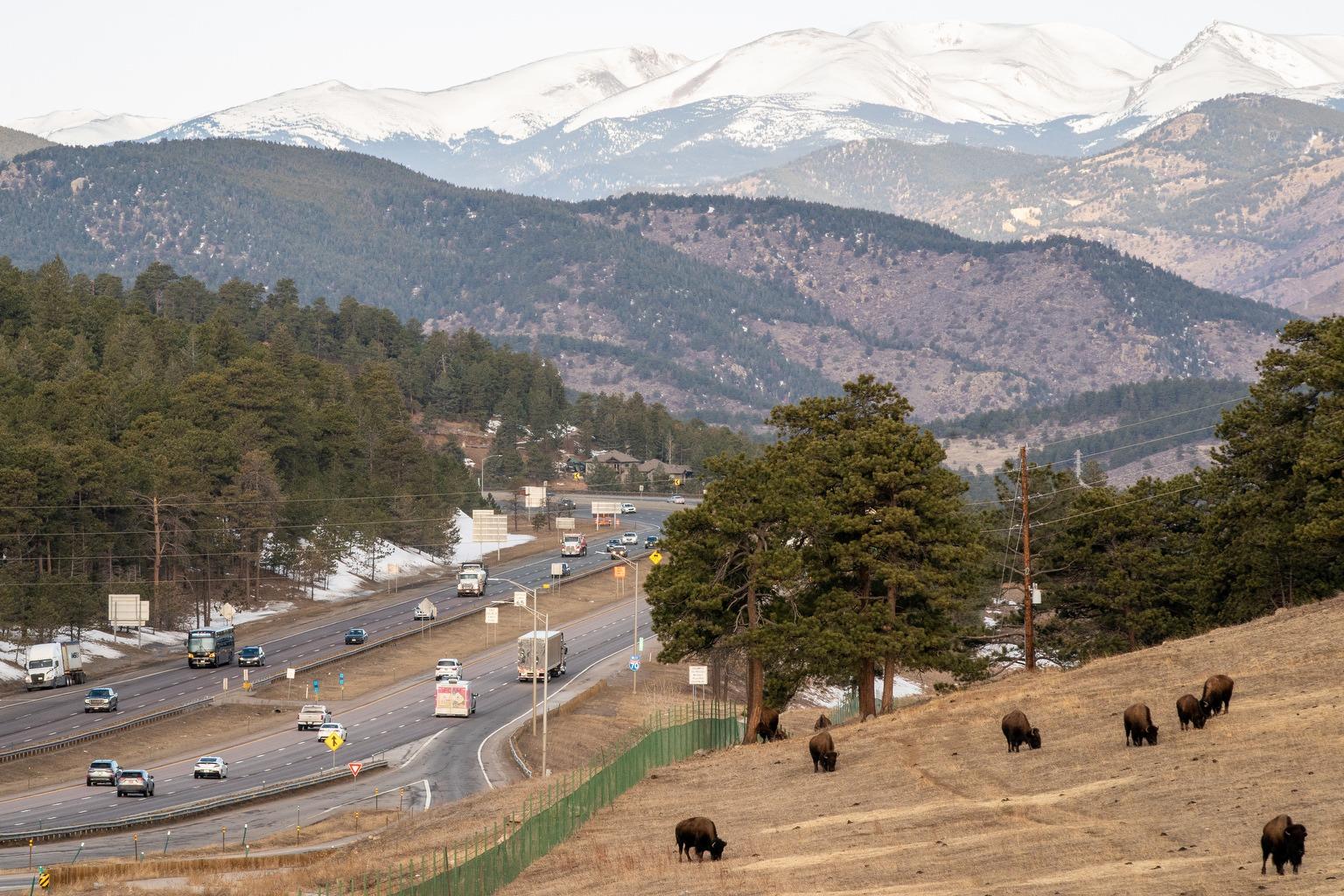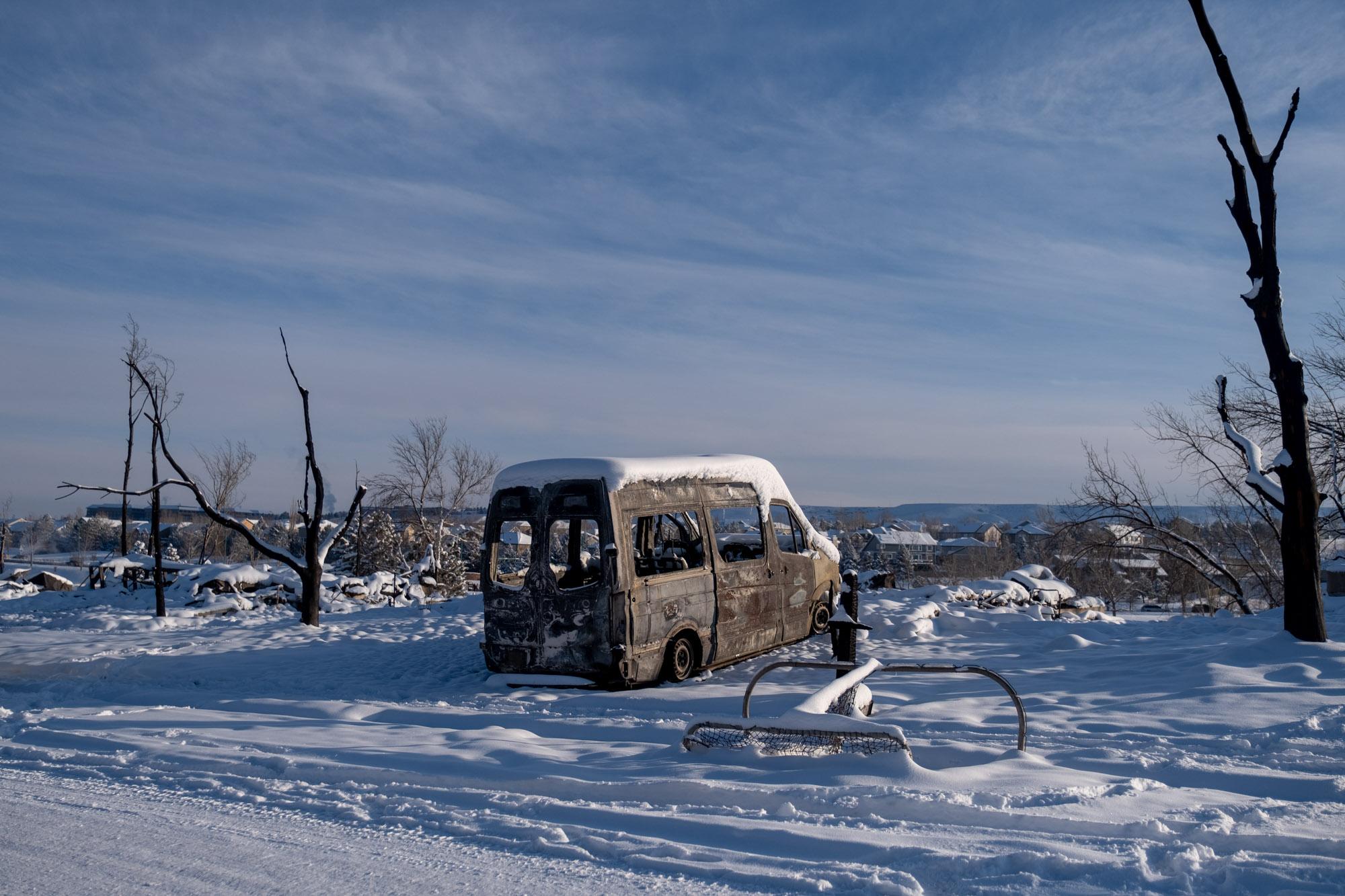
John Stein is one of the lucky ones. In a suburban neighborhood in Superior, all the homes on one side of the road are burned to the ground. But Stein’s house is on the other side of that road, unscathed.
“[I] assumed we’d come back and it would kind of be a false alarm. And for us it kind of was, because our house is still here. But for all of our neighbors it’s just devastating,” Stein said a little over a week ago, looking at his house for the first time since the Marshall Fire swept through on Dec. 30.
He said even though he’s happy, he can’t help but feel a little bit of what he calls “survivor’s guilt.”
Stein recalled how quickly it seemed everything in his life might change.
“I was walking the dog when I saw the smoke, drove to the top of the neighborhood,” described Stein, “And what I saw was a combination of tornado-slash-firestorm. It was reminiscent of what we see coming out of California.”
This is a common theme with residents who spoke to CPR News: the speed of devastation and the lack of time to get out. With wind gusts of up to 105 mph, the fire engulfed football fields worth of land in minutes, leaping over firefighter’s heads and equipment.
After seeing what was coming, Stein called his eldest daughter, told the kids to start packing, and they left immediately.
“We put some things in the garage thinking we’d circle back. But by the time we were out of the neighborhood, it was pretty clear we were going to perhaps lose our home,” he said.
Considering what could have happened, Stein feels lucky.
“It’s a shift in perspectives for us. From potential victims, to perhaps being in a position to help somebody. We’re just trying to get through it, trying to figure out what the next step is.”
Just across the street, another family, the Seversons, stood in a line on what was once their wooden fence in their side yard. They pointed and talked to each other, trying to orient themselves and figure out which parts of the pile of ash were what rooms in a previous life.
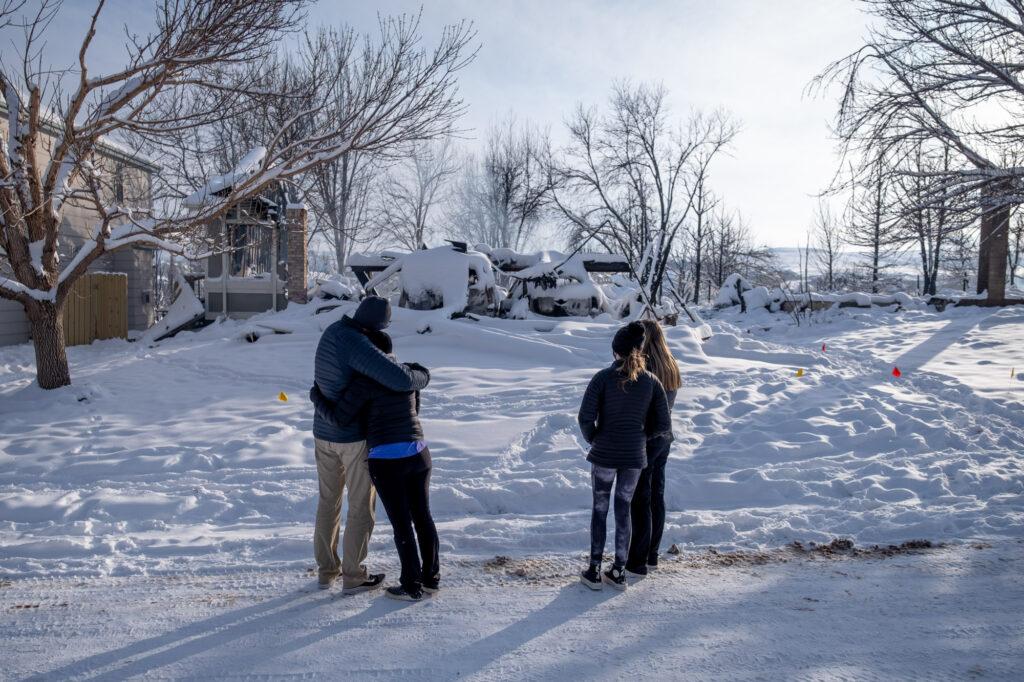
“Nothing. There’s just nothing”
“It’s amazing what houses were affected and which ones were not,” Adriane Hirsch said.
Around the corner from Stein and the Seversons, Hirsch stood with her two kids. It smelled with a stench that sticks to your clothes when someone tosses the wrong thing into the campfire, like melted plastic or burnt wood. The three surveyed the ruins of their home. The remnants of that life were still smoldering. Hirsch stumbled over her words introducing herself.
“We live,” Hirsch said, stopping to correct herself. “We lived in Superior.”
Before the fire last month, her kids also spent time at their father’s house in Louisville, but that home was destroyed as well.
“Both houses went!” said Lili, Hirsch’s 18-year-old daughter, with a slight, painful laugh. “It’s been a lot, yeah.”
Of the nearly 1,000 houses and structures burned down in the two cities on Thursday, and another hundred damaged, this one family lost two houses.
“That’s the amazing thing to me… that something so big can go down to nothing. I thought there’d be a pile of things that are leftover but burnt. But it is nothing. There’s nothing,” said Adriane. “You can’t even remember, was this where my front door was? Was this?”
“I think it’s like a lot of shock at first when you start to realize how much you don’t have anything, like dressers and…anything,” echoed Lili.
Lili was the only one home at her mother’s house in Superior when it came time to run. She didn’t smell smoke. She didn’t get an evacuation order.
“My dad could see the smoke a lot better from his house. And at a certain point [my parents] said, ‘You need to leave.’ We didn’t have time to grab anything, except the pets.”
Hirsch’s son, Ari, 15, was with his father in Louisville when a friend messaged him.
“He sent a photo of the smoke coming over and said ‘Something is going down.’”
They recalled that within 12 minutes, the fire was engulfing their neighborhood.
“We ran, grabbed the cats and the dogs, and we drove,” Ari said. “And at the bottom of the neighborhood there were already flames in someone's backyard. And turning out of our neighborhood we couldn't even see.”
“Any longer, it would have been super dangerous,” Lili said.
Even though their house didn’t survive, and neither did almost any of their possessions, the Hirsch’s feel lucky, just like Stein.
“We are so lucky. We are all safe. Our pets are safe. Nobody got hurt,” Lili said.
Now, they’re at a crossroads.
“We’ve been questioning what this means,” Ari said. “Our whole family is like, ‘Is this a sign? What does it mean? Get out of here?’ We have no idea.”
"We are trying to find a place to live, of course something that's furnished, so we have a couple good leads, but we really don't know,” Adriane said. “We all need a lot less. We all need a lot less. I'm never going back to where I was.” She added, “And I'm happy about that. So I think that's really what I got out of this.”
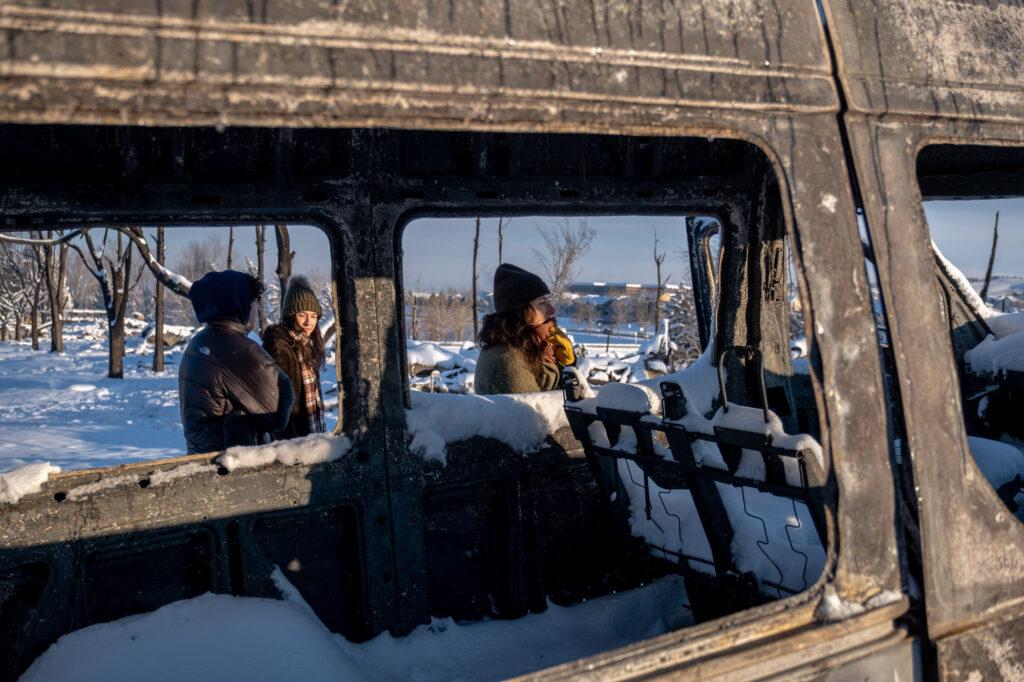
1,000 houses and buildings burned, including apartments
Christina Eisert lived in the Sagamore subdivision near Costco in Superior with her kids.
Their rental home burned, along with everything in it.
Now, they are staying in Eisert’s elderly mother’s basement and don’t have enough beds. She is trying to find housing and wants both her sons to stay in their same Boulder Valley Public Schools. Eisert said she’s trying to fight for her kids, one of whom has Down syndrome.
Elected officials, like Sen. Michael Bennet, have encouraged people to seek help.
“Think about the kids who have been dislocated,” he told reporters last week. “In the middle of the school year, in the middle of a pandemic … What I would say is: if you need help, ask for help, if your kids need help, ask for help.”
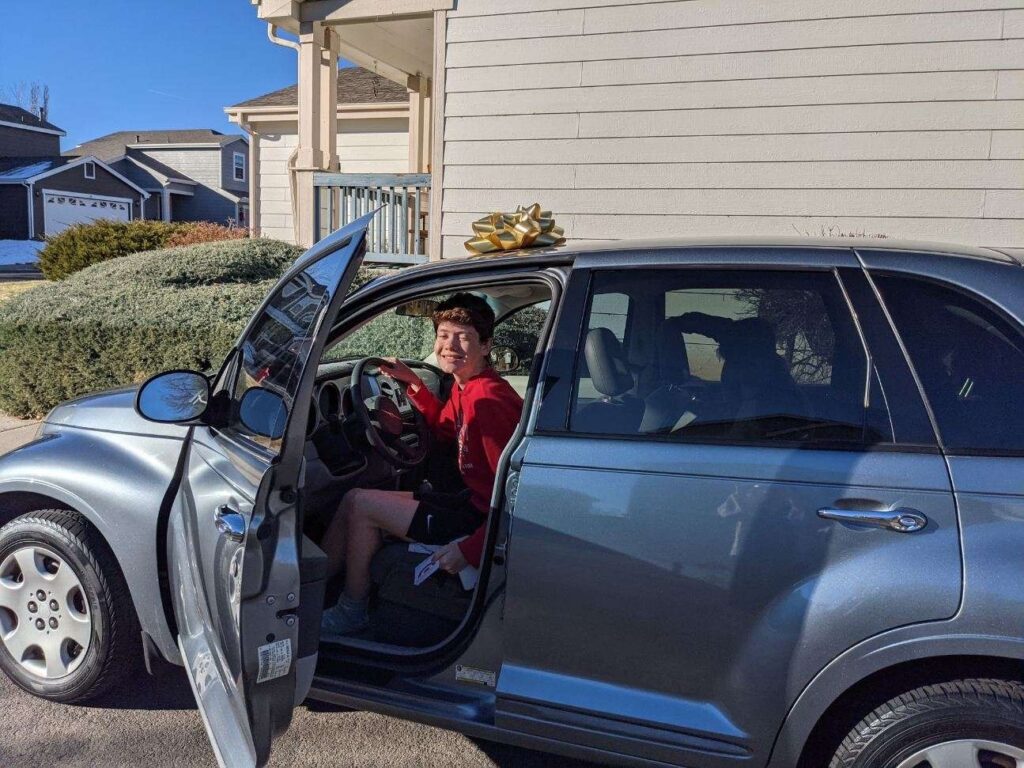
But Eisert said she is having trouble getting that help. She is worried that, as a renter, she’s not going to be able to find any housing in Louisville or Superior to accommodate them. She had $10,000 in renter’s insurance, but she says that won’t make her “whole” again.
FEMA officials have said people should be eligible for up to $37,500. Eisert said she hasn’t gotten any commitment yet that she will get that kind of assistance.
The Colorado Apartment Association has launched a housing directory for victims of the Marshall Fire, with some discounts and fees waived. The Boulder Area Rental Housing Association has a similar list. There are 13,000 housing units available in Colorado, but finding affordable housing in the same school district will likely be a challenge.
Eisert spent last week looking for another place to live with enough beds for the three of them. It’s been a lot of tears, she said, and frustration. But, they are all happy to be alive and together with their dogs.
“On the other hand we don’t need anything, we have everything we need,” she said. “The dogs, they seem to get it. The first night we settled down, they just couldn’t stop hugging and kissing us.”
Eisert said she feels like she has everything and nothing at the same time.
“At one point after we were driving away, [my son Asher] just looked at me and said, ‘What if this had happened at night when everyone was sleeping?’”
Alejandro A. Alonso Galva contributed to this report.
